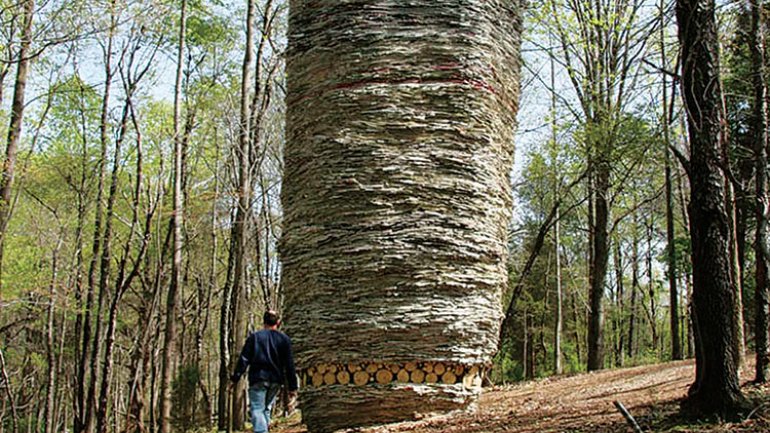The Nature of Risk
The Nature of Risk
You could argue that there are two kinds of artists: those who like planning and those who like spontaneity. I know which camp I fall into – I’m a planner. If I want to make a painting or a piece of jewelry, as I do sometimes, I get to work making sketches and checklists. I figure out the steps I’m going to take and the order in which I’ll take them. I don’t leave much to chance.
Other artists, I’ve discovered, approach artmaking very differently. I remember a painting teacher I had once describing her process as an “ongoing dialogue with the paint.” I wasn’t sure I wanted to give the paint a chance to speak.
I thought about this as we prepared this issue focused on the outdoors. If any artwork takes planning, it’s sculpture made to withstand the elements. Sculptors who make work for the outdoors have to figure nature – wild, unpredictable nature – into their designs. As a result, says David R. Collens, director of one of the world’s premier sculpture parks, “outdoor sculpture is significantly more difficult, challenging, and expensive” than other sculpture. Maintenance and conservation are critical and ongoing needs.
Yet some artists who make work for the outdoors relish letting nature take its course. Take Steven Siegel. In one sense, he’s a planner. For his recent Hill and Valley installation, he had to design the structure and calculate the number of lodgepoles pines he needed (28), along with the amount of paper (30,000 pounds) and 5-inch nails (400 pounds) – all before he and a squadron of volunteers started on the execution in a Montana sculpture park.
But Siegel also works in the realm of the spontaneous, because his work is intended to evolve with the effects of sun, wind, and precipitation. He repurposes man-made materials – newspapers, tires, crushed plastic, aluminum cans – to make massive sculptures that are designed to weather and settle and take on flora and fungi over time. “Decomposition is built into their DNA,” says writer Brian K. Mahoney of Siegel’s installations.
Nature, Siegel has learned in the 25 years he’s been making his sculptures, is a capricious collaborator, a risky medium. One 2002 work, Scale, made of 20,000 pounds of newspaper, was expected to withstand weather conditions in eastern Pennsylvania for 15 years. But just four years in, it started to collapse. Another rough winter, and there was little left.
Still, the risks Siegel takes are not so different from those taken by serious planners – those of us who’d never welcome the havoc that nature wreaks. The difference is in what we planners tell ourselves, as we sketch and calculate and design: that we’ve got it all under control. We don’t.
In my checkered art career, I’ve had many disappointments, which for me were on the scale of Scale. I slaved over a brooch once that fell apart two weeks later. I’ve had pots blow up in the kiln. Recently I started over five times on a painting before deciding my idea was just not going to work.
What artists such as Siegel seem to know is that art is risk, whether you wing it or plan it out to the last tiny detail. We can deny that or embrace it. But it’s not going away.

